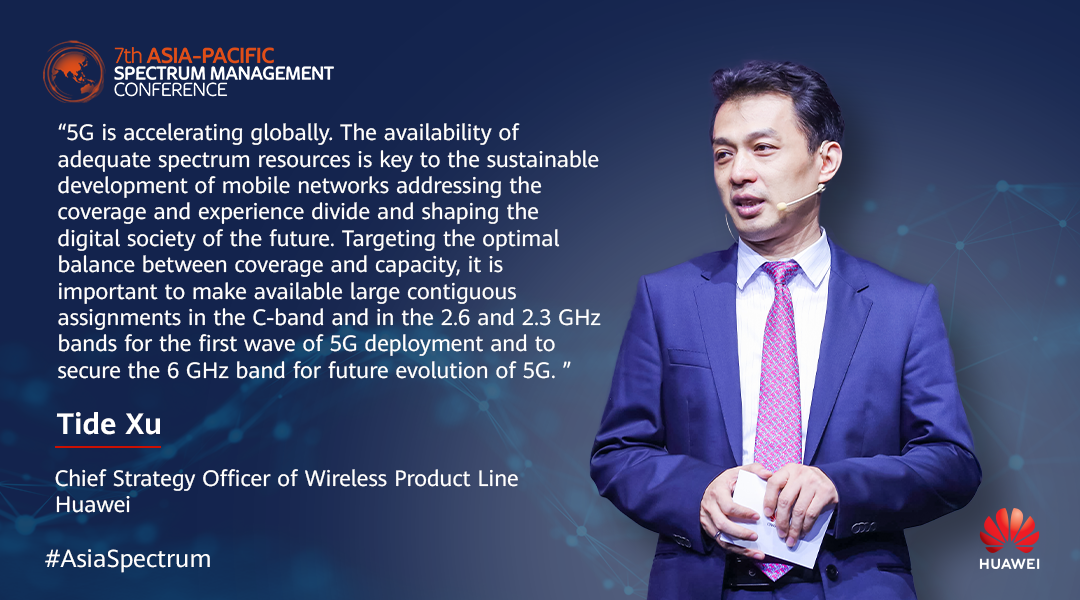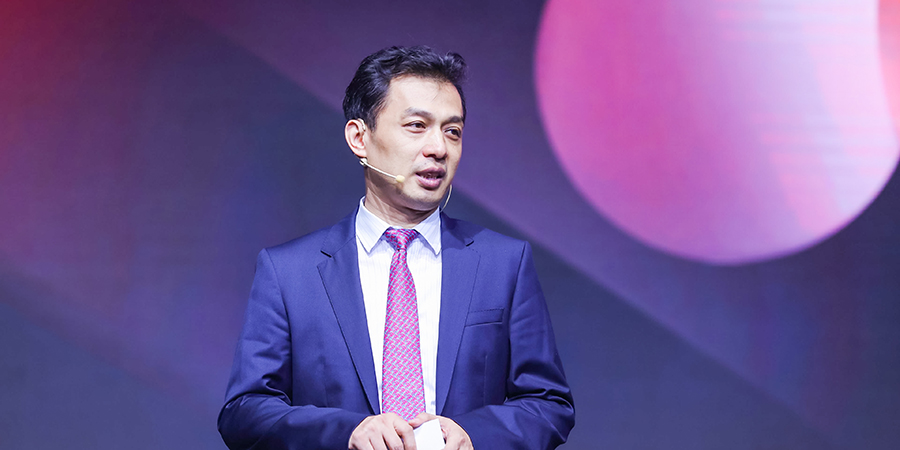In an exclusive interview with Telecom Review Asia Pacific, Tide Xu, Chief Strategy Officer, Wireless Product Line at Huawei discusses policy recommendations to brace Asia-Pacific for a digitalized future
Expanding on his keynote speech at the 7th Asia-Pacific Spectrum Management Conference, held from 24 May to 27 May 2021, Tide Xu, Chief Strategy Officer, Wireless Product Line at Huawei addressed a prevalent digital divide in the Asia-Pacific region and offered details on policy recommendations as countries chart a sustainable digital development in the 5G era.
Bridging the urban-rural broadband gap
APAC, made up of densely-populated countries and some of the fastest-growing economies in the world, has been experiencing a surge in mobile broadband demand in recent years. Against a backdrop of uneven network distribution between urban and rural areas, the pandemic has fuelled a greater divide, but has also helped governments recognize the role of mobile broadband as a catalyst for digital transformation moving forward.
As nations embark on digitalization strategies to build economic resilience, Xu cited three policy recommendations to enhance mobile broadband development and close the digital divide.
Firstly, with spectrum being critical to mobile network development, the ready provision of key spectrum bands such as C-band and 700 MHz is instrumental to unleashing a good mix of coverage and capacity benefits. As countries work towards a 5G-oriented evolution, Xu stressed the importance of adopting an all-encompassing spectrum strategy combining low-, mid- and high-bands to support all use cases.
Secondly, countries yet to roll out 5G should continue investing in 4G infrastructure to ensure a seamless transition into the 5G era. Until 2030, 4G and 5G will coexist to power connectivity and offer nationwide network coverage. Apart from expanding 4G coverage to increase the penetration rate of network users, 4G VoLTE deployment should be accelerated to expedite the sunset of 2G/3G. With mobile broadband coverage being key to digital inclusion, policies can incentivize mobile broadband coverage in underserved areas.
Thirdly, affordability and availability of entry-level mobile devices are essential for underprivileged families in rural areas to access mobile internet. Supportive demand-side policies as such respond to user needs to effectively bridge the usage gap.
Bridging the experience gap
While 4G changes lives, 5G changes societies. According to findings from consulting firm A.T. Kearney, the Industry 4.0 evolution is estimated to bring about a revenue potential of about $150 billion in ASEAN by 2025. In this evolution, 5G will be a key driver to unlock a broad range of opportunities to achieve significant socio-economic growth.
These promises have motivated transitions from 4G to 5G, with 5G deployment gaining momentum in many countries. In fact, the 5G revolution is taking place at a faster pace compared to previous 3G or 4G revolution. Frontrunners in global 5G adoption like China and South Korea are experiencing stellar progress. A leader in 5G adoption, China has accumulated more than 285 million 5G subscribers, with more than 819,000 base stations deployed. Meanwhile, South Korea has amassed 5G subscribers totaling about one-fourth of its total population. As regional countries chart their trajectories to harness the benefits of 5G, Xu noted three takeaways from China and South Korea’s 5G journey thus far.
Firstly, both governments embrace national digitalization founded on 5G infrastructure, using stimulus policies to spur accelerated 5G adoption across various industries.
Secondly, spectrum strategies have been mapped with future 5G evolution in mind; each MNO should be allocated a large bandwith of 80 MHz to 100 MHz continuous TDD, deemed ideal for 5G deployment to kickstart a country’s 5G journey. This strategy can attract early buy-in as advanced massive MIMO offers user experiences 25 times more superior than 4G.
Thirdly, MNOs in both countries have been actively developing new applications, services and business models for both the consumer market and vertical industries. For the consumer market, MNOs have been delivering innovative content such as augmented reality and virtual reality experiences. Across vertical industries, high-connectivity, low-latency 5G has been deployed to power smart ports, smart manufacturing, smart agriculture and etc.. In 2020, China recorded more than 2,000 commercial and pilot projects across industry verticals.
Besides China and South Korea, Thailand is also picking up speed in 5G deployment. A pioneer in 5G development in the region and the first country in ASEAN to launch a 5G commercial network utilizing a TDD band plan in 2.6 GHz, Thailand has garnered 1.5 million subscribers within the first year of launching 5G services, yielding user experiences 13 times more superior than that offered by 4G. Thailand has also begun exploring wide 5G applications in industrial use cases.

Additional mid-band spectrum to reap full 5G value
5G marks a new era of connectivity that will lead this decade, similar to how 3G and 4G stayed dominant for about a decade before gradually phasing out. After 2025, the industry will enter 5G-Advanced (5.5G) – the second phase in the 5G evolution introduced by the 3GPP in conjunction with Release 18.
Amid the transitions, industries will continually innovate to align with changing requirements of both the consumer and vertical markets. To keep abreast with the evolution, Huawei is committed to continually invest in research and innovation to embrace 5G-Advanced and seek synergistic collaborations with global industry partners to develop new applications and expand existing capabilities.
Moving forward, 5G success is dependent on access to a cost-effective mid-band spectrum, already deployed by about 90% of global MNOs to deliver an optimal balance of coverage and capacity for 5G services.
Given that countries like China and South Korea are reporting an average handset data traffic per 5G user per month (DOU) of 30 GB to 40 GB – a threefold jump from 4G users – ITU predicts that DOU will reach 250 GB in the next 5 to 10 years. To support sustainable development in the coming years, APAC countries require at least 1 GHz of additional mid-band spectrum, according to research from Coleago Consulting. This will provide MNOs the capability to scale 5G or 5G-Advanced services accordingly, to reap the full potential of the prevailing service.
Within the mid-band, countries are now exploring 6GHz as the ideal future mobile band after the WRC-19 earmarked it as a new agenda item for IMT identification for WRC-23. 6GHz is also perhaps the only optional intermediate frequency.
Based on internal evaluations demonstrating 6GHz’s comparable performance to C-band in satisfying requirements for both capacity and coverage, Xu echoes GSMA’s recent call for governments to license the 6 GHz frequency band to facilitate sustainable digital development.
Capturing the full value of 5G is an international effort that requires governments and regulators to work on supporting harmonised bands. For now, the success of 5G services and beyond weighs heavily on governments and regulators to evaluate and formulate spectrum strategies and policies. Xu concluded by urging policy-makers to take a comprehensive and balanced approach towards harnessing the potential of mid-band spectrum when pursuing national digitalization ambitions.
